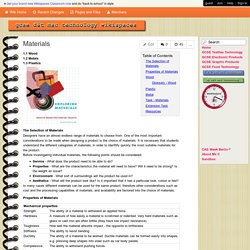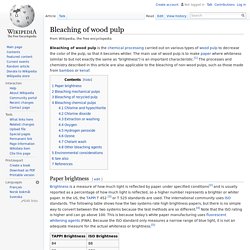

Cosmetics Info. What Is It?

Fragrances are complex combinations of natural and/or man-made substances that are added to many consumer products to give them a distinctive smell. Fragrances are used in a wide variety of products to impart a pleasant odor, mask the inherent smell of some ingredients, and enhance the experience of using the product. Fragrances create important benefits that are ubiquitous, tangible, and valued. They solve important functional problems and they satisfy valued emotional needs. Fragrances can communicate complex ideas – creating mood, signalling cleanliness, freshness, or softness, alleviating stress, creating well-being, and triggering allure and attraction. Why is it used in cosmetics and personal care products? Fragrances have been enjoyed for thousands of years and contribute to people’s individuality, self-esteem and personal hygiene. News Analysis: The celebrity smell sell. Earlier this month, in preparation for the Christmas buying season, Kate Moss followed the likes of the Beckhams and Gwen Stefani to become the latest celebrity to lend their name to a perfume.

The market is booming. Worth an estimated £255m, sales of celebrity scents have increased 2000% since 2004, according to fragrance retailer The Perfume Shop. While the market is close to saturation - more than 30 have launched in the UK this year, with 10 over the summer alone - it remains difficult to predict an end to the trend. Elizabeth Taylor was the first to capitalise on her stardom with the launch of White Diamonds in 1991 and Unilever-owned Coty, which has seven celebrity scents in its UK portfolio, kicked off the recent surge with the launch of Jennifer Lopez's fragrance, Glow by JLo, in 2002.
With Kate Moss' fragrance expected to generate sales of about £25m in its first year and up to £40m in its second, experts predict that celebrity variants could soon outsell traditional perfumes. Msc-ks4technology - Materials. 1.1 Wood1.2 Metals1.3 Plastics Designers have an almost endless range of materials to choose from.

One of the most important considerations to be made when designing a product is the choice of materials. It is necessary that students understand the different categories of materials, in order to idenftify quickly the most suitable materials for the product. Before investigating individual materials, the following points should be considered:Service - What does the product need to be able to do? CSQA - Your Qualities Our Value. - Glass packaging material for foods and beverages. Advantages and disadvantages of using glass as a packaging material for foods and beverages with reference to a high sales volume drinks bottle and a jar for jam (comfiture).

Quality defects that might be encountered with using glass containers and how these could be minimized by the glass Manufacturer and Quality tests to be carried out by the glass Manufacturer to eliminate them. Gaetano Dagostino, CSQA Qualified BRC IOP International Inspector 1.0 - Introduction In this paper glass bottles for wine (both normal and sparkling) and jars for jam and comfiture will be considered. 1.1 - Wine I would like to report some basic information of the products under consideration which will be helpful to understand the further technical considerations. Wine is defined by Oxford dictionary as “an alcoholic drink made from fermented grape juice…”.
Bleaching of wood pulp. Bleaching of wood pulp is the chemical processing carried out on various types of wood pulp to decrease the color of the pulp, so that it becomes whiter.

The main use of wood pulp is to make paper where whiteness (similar to but not exactly the same as "brightness") is an important characteristic.[1] The processes and chemistry described in this article are also applicable to the bleaching of non-wood pulps, such as those made from bamboo or kenaf. Paper brightness[edit] Brightness is a measure of how much light is reflected by paper under specified conditions[2] and is usually reported as a percentage of how much light is reflected, so a higher number represents a brighter or whiter paper.
In the US, the TAPPI T 452 [3] or T 525 standards are used. The international community uses ISO standards. Newsprint ranges from 55-75 ISO brightness.[6] Writing and printer paper would typically be as bright as 104 ISO. Bleaching mechanical pulps[edit] Bleaching of recycled pulp[edit] Oxygen[edit] Cosmetics Packaging. GCSE Bitesize: Packaging: functions and techniques. GCSE Bitesize: Packaging materials. GCSE Bitesize: Packaging materials. Our products made of glass for perfume and cosmetics - Gerresheimer. Perfume and Cosmetics Packaging Papers. QUALITY CARD AND PACKAGING FOR PERFUMED PRODUCTS. Perfumed products arrive in the shops in stylish boxes / packaging.

This is usually manufactured from card with the insert being made from either lower quality, recycled card or vacuum formed hi-density polystyrene (PS) and for high quality packaging, EPP Expanded Polypropylene. Quality Card is popular as it is cheap and can be recycled. Also, colour and images can be applied using a number of printing techniques.
Normally the card is lacquered to give the box a gloss / satin finish. High quality card will ensure that the colours printed on its surface, will appear bright and sharp. Usually the packages are cuboid in shape, as this means that they can be transported and stacked on shelves easily, efficiently using space. PACKAGING FOR PERFUMED PRODUCTS - ANALYSIS.